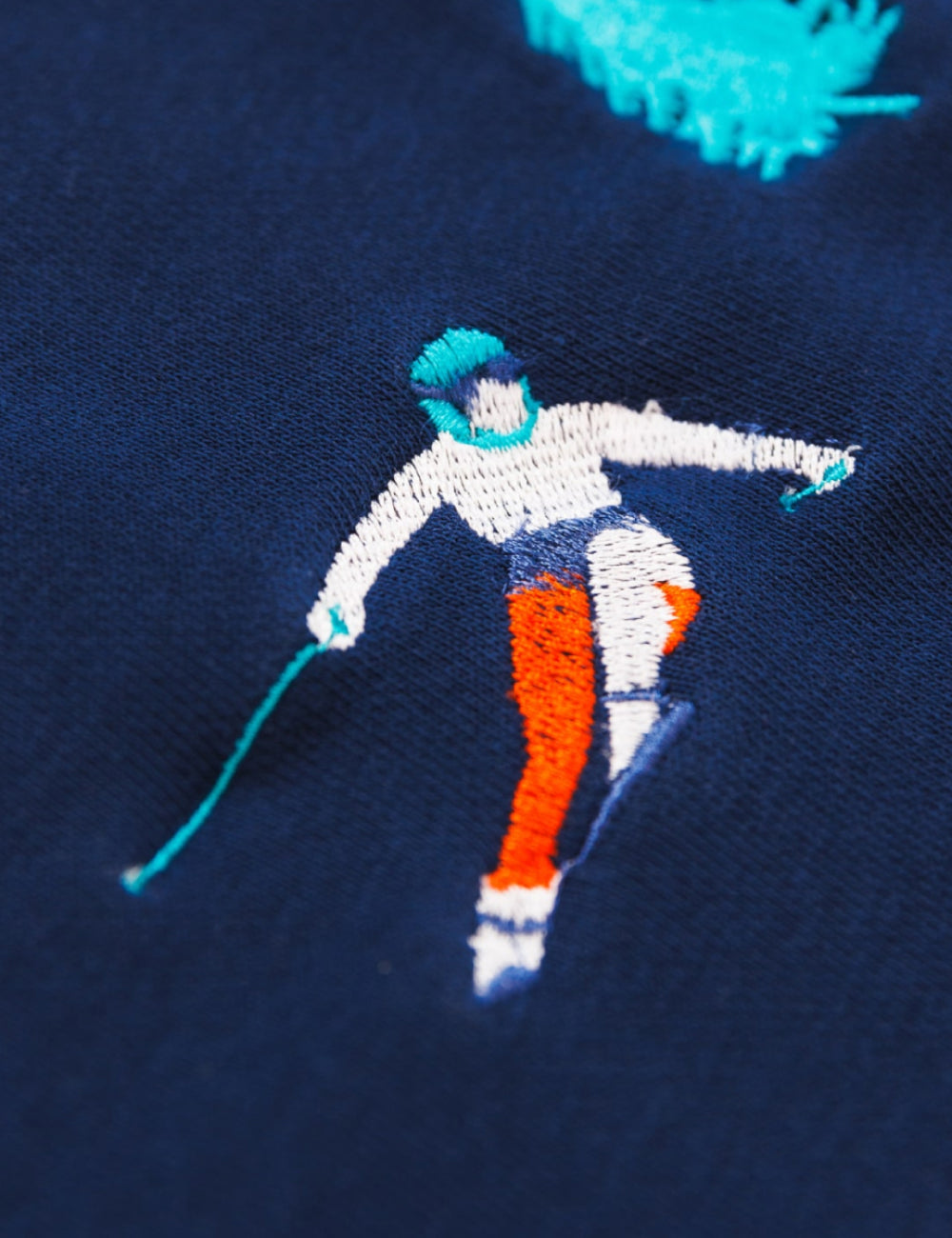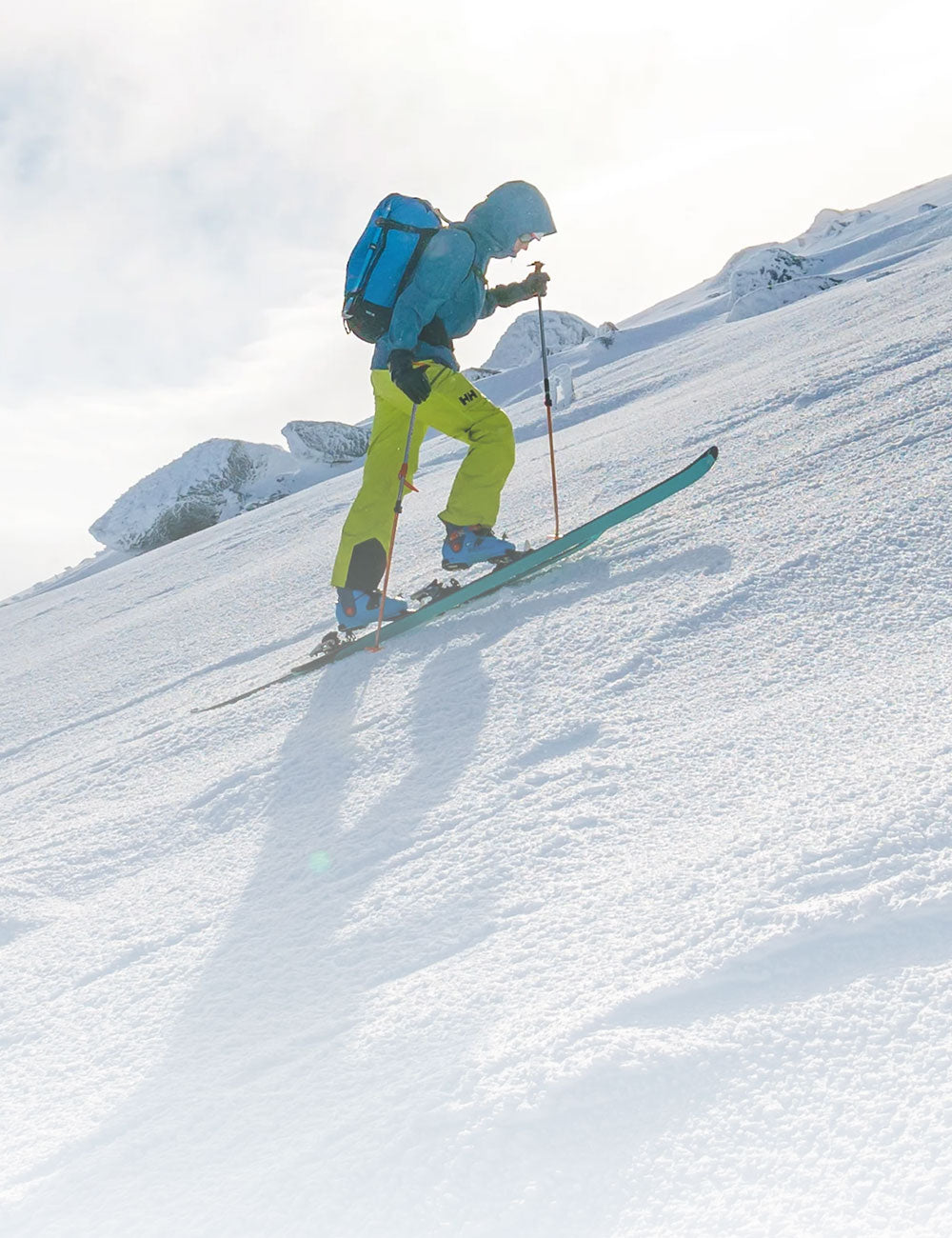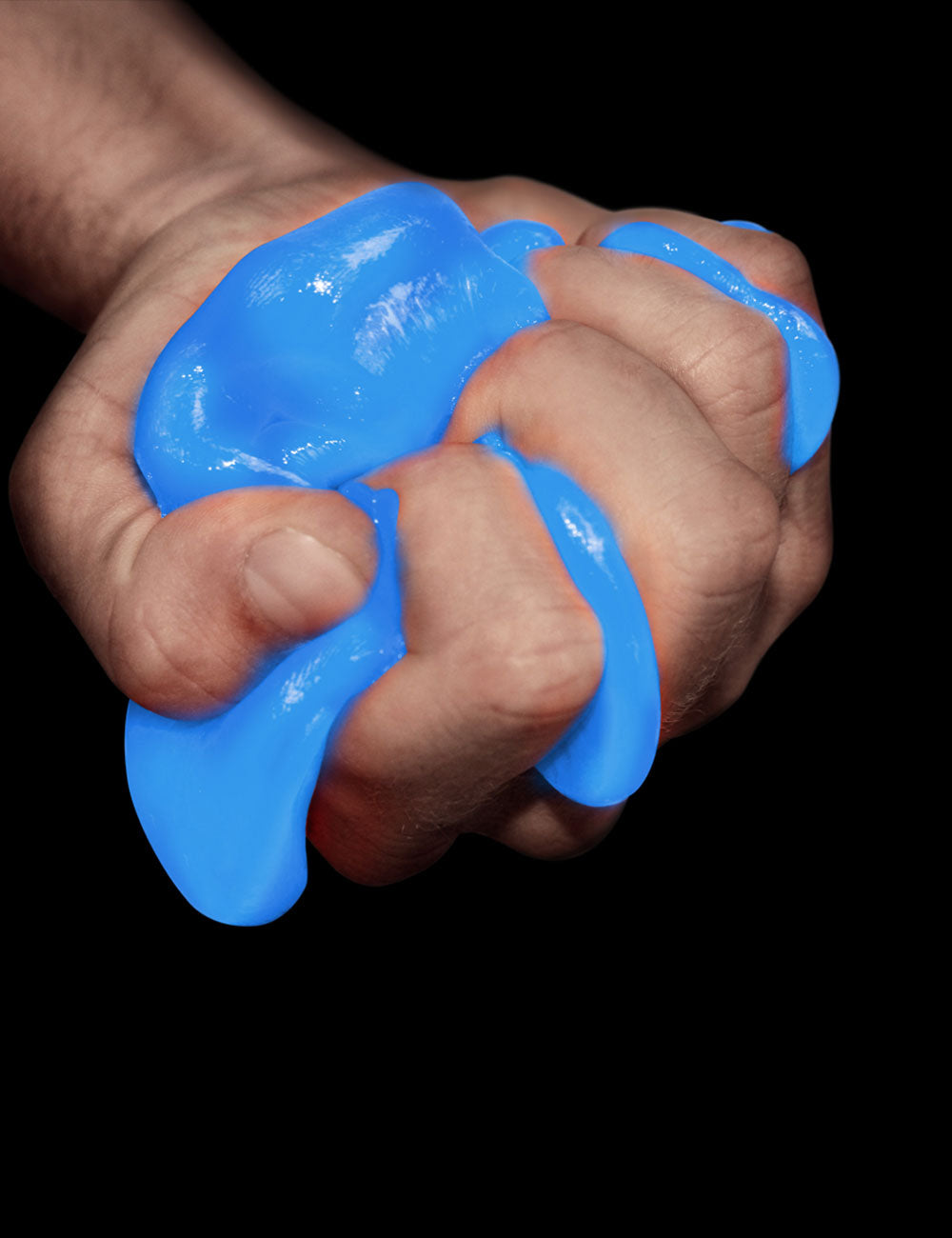A Silly Putty–Like Material Revolutionizes the Ski World
Author Nicholas DeRenzo Illustration Jameson Simpson

If you’ve ever played with Silly Putty or oobleck (that elementary-school science-class favorite made from cornstarch and water), you’ve experienced the bizarre world of non-Newtonian materials. Unlike the vast majority of substances found on Earth, these wacky fluids don’t follow Isaac Newton’s Third Law of Motion, which states that every action has an equal and opposite reaction. Instead, applying force changes the behavior and perceived stiffness of the material. Think, for example, of the way Silly Putty can be either an oozy pool of goo or a bouncy ball, depending on the manner in which it’s handled. Cyrus Schenck, the 24-year-old Vermont inventor and founder of RENOUN skis, has turned to this unique class of fluids to build a revolutionary all-terrain ski that incorporates non-Newtonian polymers to mimic the flexibility of a car’s suspension. This so-called Hyper-Damping Technology (HDT) enables skis to run smoothly on fresh, soft powder and rocky terrain alike. Here, a look at how these ultra-cool marvels could ice out the competition.
1. The non-Newtonian polymer Schenck uses is an orange putty-like goo that British firm D30 originally created to be used in body armor. When held in your hand, the polymer is supple and malleable, but when force is applied by hitting it, it tenses up and becomes a rubbery solid. Schenck likes to show off its strength by wrapping it around the neck of a beer bottle and slamming it with a hammer. Ta-da! The glass remains intact.
2. Skis naturally “chatter” (vibrate and rattle) when sliding over rough terrain. Schenck’s team crafts RENOUN ski cores out of strong, lightweight maple, then carves out channels in the parts of the skis that usually experience the most chatter and fills them with the non-Newtonian polymer.
3. According to Newton’s Third Law, the faster and harder you ski (the action), the stronger the chatter should be (the equal and opposite reaction). Instead, due to the polymer’s unique molecular structure, the stronger the vibrations, the more damped (able to absorb vibrations) the ski becomes. The HDT can dampen the skis by an impressive 300 percent. Counterintuitively, the ski gets stabler the faster it goes, while remaining soft and nimble on easier terrain. So now what’s your excuse for not tackling that double black diamond run?










Leave a comment
This site is protected by hCaptcha and the hCaptcha Privacy Policy and Terms of Service apply.